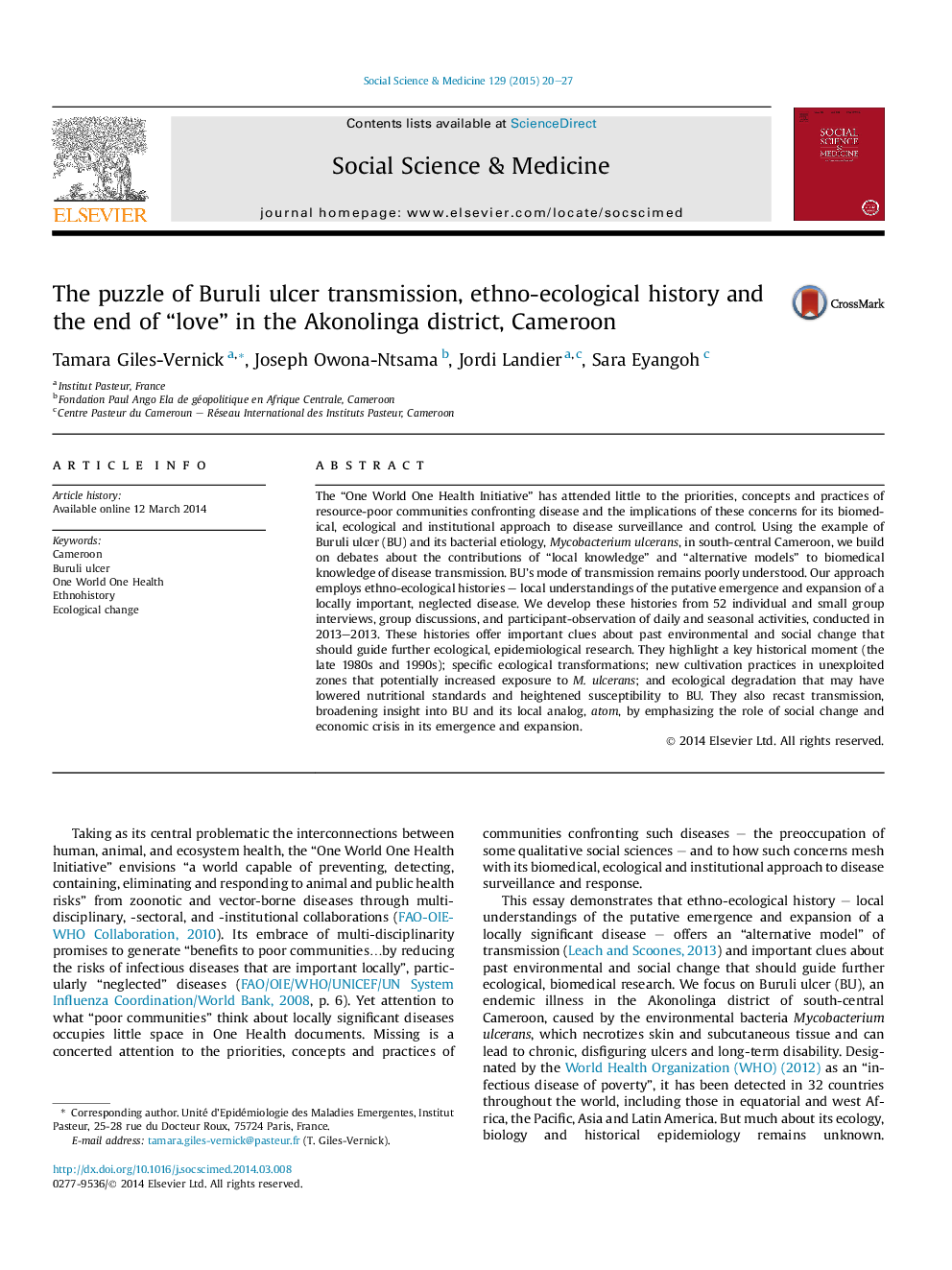| کد مقاله | کد نشریه | سال انتشار | مقاله انگلیسی | نسخه تمام متن |
|---|---|---|---|---|
| 952246 | 1476039 | 2015 | 8 صفحه PDF | دانلود رایگان |
• One World One Health is less attentive to poor communities' views on illnesses.
• Ethno-ecological histories provide insights into these perspectives.
• We offer ethnohistorical study of Buruli ulcer (BU), ecology, land use in Cameroon.
• Locally-identified changes offer hints for untangling puzzle of BU transmission.
• They show overlooked socio-economic processes, useful to predict BU emergence.
The “One World One Health Initiative” has attended little to the priorities, concepts and practices of resource-poor communities confronting disease and the implications of these concerns for its biomedical, ecological and institutional approach to disease surveillance and control. Using the example of Buruli ulcer (BU) and its bacterial etiology, Mycobacterium ulcerans, in south-central Cameroon, we build on debates about the contributions of “local knowledge” and “alternative models” to biomedical knowledge of disease transmission. BU's mode of transmission remains poorly understood. Our approach employs ethno-ecological histories – local understandings of the putative emergence and expansion of a locally important, neglected disease. We develop these histories from 52 individual and small group interviews, group discussions, and participant-observation of daily and seasonal activities, conducted in 2013–2013. These histories offer important clues about past environmental and social change that should guide further ecological, epidemiological research. They highlight a key historical moment (the late 1980s and 1990s); specific ecological transformations; new cultivation practices in unexploited zones that potentially increased exposure to M. ulcerans; and ecological degradation that may have lowered nutritional standards and heightened susceptibility to BU. They also recast transmission, broadening insight into BU and its local analog, atom, by emphasizing the role of social change and economic crisis in its emergence and expansion.
Journal: Social Science & Medicine - Volume 129, March 2015, Pages 20–27
